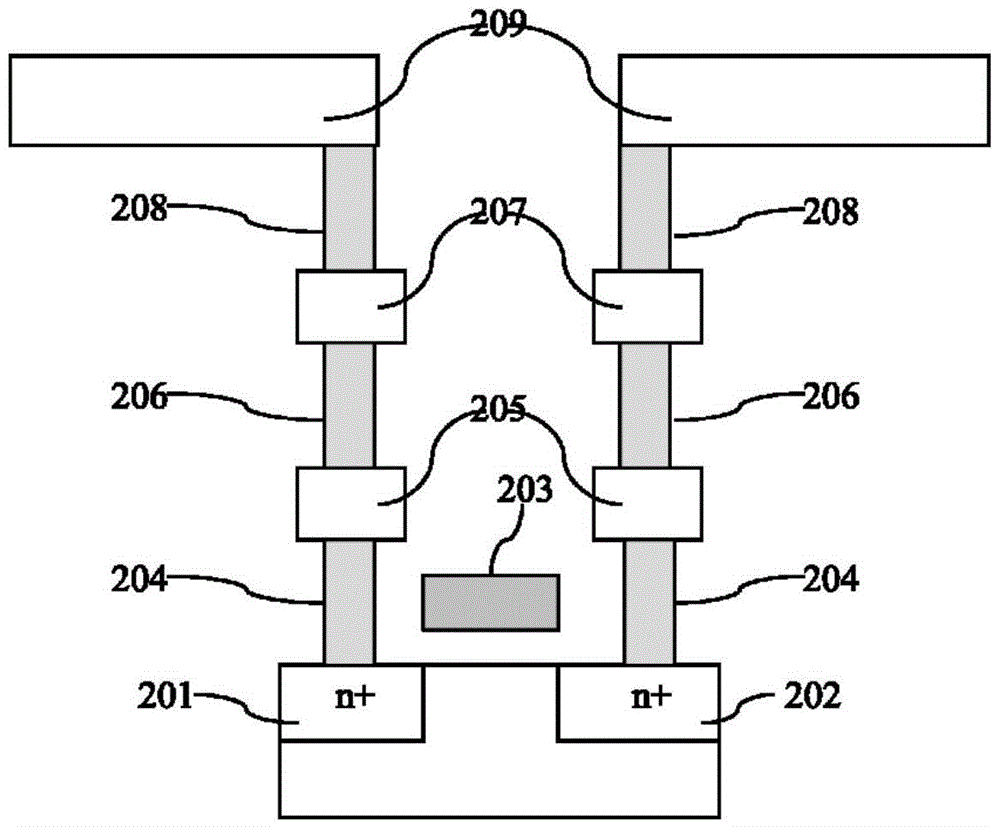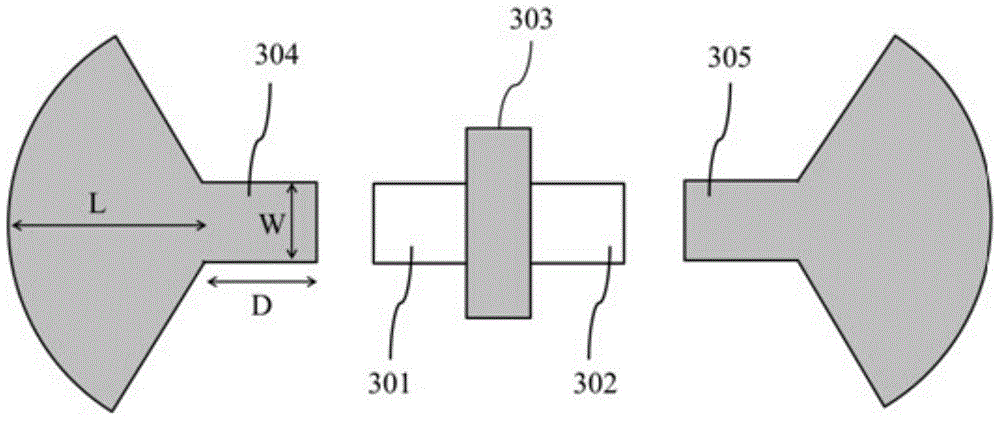A terahertz detector based on an optical antenna
A terahertz detector and optical antenna technology, applied in the field of terahertz signal detection, can solve problems such as unfavorable detector array integration, limited detector voltage response, limited radio antenna gain, etc., and achieves favorable integration and reduces design difficulty. , the effect of reducing the detector area
- Summary
- Abstract
- Description
- Claims
- Application Information
AI Technical Summary
Problems solved by technology
Method used
Image
Examples
Embodiment Construction
[0020] In order to make the content of the present invention clearer, the implementation manner of the present invention will be further described in detail below in conjunction with the accompanying drawings.
[0021] image 3 Shown is a schematic plan view of the structure of the terahertz detector based on the optical antenna of the present invention. Polysilicon is used as the antenna material, and the antennas 304 and 305 are respectively placed at the two ends of the source terminal 301 and the drain terminal 302 of the transistor. The two ends 304 and 305 of the antenna are formed by a polysilicon layer, and the two ends of the antenna are respectively placed at the two ends of the source 301 and the drain 302 of the transistor, and the transistor gate 303 is located in the middle of the antenna gap, and the transistor gate 303 is also a polysilicon layer, and the gate length is The size is 50-300nm. The transistor gate 303 is subjected to a silicon metallization (sil...
PUM
 Login to View More
Login to View More Abstract
Description
Claims
Application Information
 Login to View More
Login to View More - R&D
- Intellectual Property
- Life Sciences
- Materials
- Tech Scout
- Unparalleled Data Quality
- Higher Quality Content
- 60% Fewer Hallucinations
Browse by: Latest US Patents, China's latest patents, Technical Efficacy Thesaurus, Application Domain, Technology Topic, Popular Technical Reports.
© 2025 PatSnap. All rights reserved.Legal|Privacy policy|Modern Slavery Act Transparency Statement|Sitemap|About US| Contact US: help@patsnap.com



